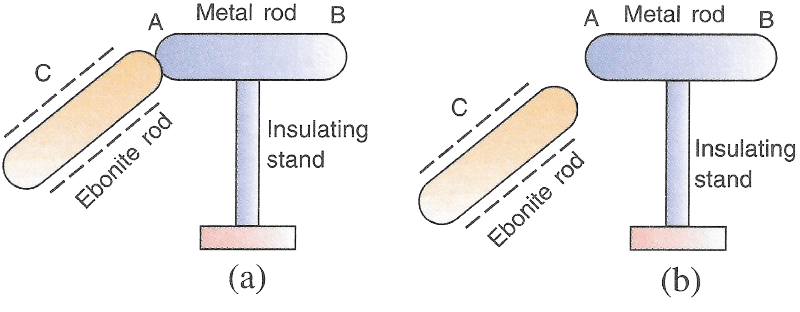Physics
Explain the charging by induction in terms of movement of electrons.
Static Electricity
10 Likes
Answer
Suppose we want to charge a metal rod A negatively by induction. Bring a positively charged glass rod B near one end of rod A.
The near end P of the rod A acquires negative charge and the far end Q acquires positive charge. The positively charged glass rod B attracts the free electrons from the end Q towards the end P of rod A. Thus, end P becomes negatively charged as it gains the electrons and end Q becomes positively charged as it loses the electrons.
Now touch the end Q of rod A by hand and then remove hand and rod B simultaneously. The rod A becomes negatively charged.
On touching the end Q of rod A, the free electrons move from earth to neutralize the positive charge at end Q. On removal of glass rod B and hand simultaneously, the negative charge at the end P gets distributed throughout the rod A making it negatively charged.
Answered By
7 Likes
Related Questions
Explain the charging by conduction in terms of movement of electrons.
Describe the method of charging a conductor by induction.
Figure below shows a metal rod AB placed on an insulating stand. In Fig.(a), a negatively charged ebonite rod C is touched with the metal rod AB, while in Fig.(b), the negatively charged ebonite rod C is held near the rod AB. State the kind of charges at the ends A and B of the rod, in each case.

Can you charge an insulator by the method of conduction?